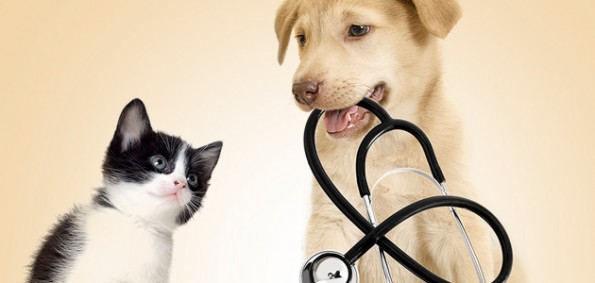
LENTIGO SIMPLEX IN ORANGE CATS

Lentigo simplex has been described in orange cats. The condition is characterized by asymptomatic macular melanosis usually beginning in cats younger than 1 year of age.
The lesions start on the lips and begin as tiny black asymptomatic spots that gradually enlarge and become more numerous with time. There can be lesions on the nose, gingiva,and eyelids in addition to the lip. Well-circumscribed, generally circular areas of intense uniform macular melanosis,ranging from 1 to 9 mm in diameter and occasionally coalescent, are present in variable numbers. The surrounding tissue is normal. The lesions do not vary in the intensity of hyperpigmentation with the time of year. They are asymptomatic, do not develop into melanoma, and have no identified cause.
Histopathologic findings include marked hypermelanosis,predominantly of the basal cell layer of the epithelium, that is caused by the increased numbers of melanocytes and by hypermelanosis of the neighboring basal keratinocytes. Occasionally, melanophages are seen in the the superficial dermis.
Lentigo simplex is a cosmetic defect. These lesions do not require treatment, but if it is desired, surgical excision is the only way to eliminate them.
Muller and Kirk's Small Animal DERMATOLOGY
 پیکا (هرزهخواری) در گربهها
پیکا (هرزهخواری) در گربهها
در اصطلاح به معنی خوردن مواد غیرخوراکی و در لغت به معنی زاغ ( دلیل نامگذاری این عارضه هم میل زاغ به هرزهخواری است.) میباشد. در همهی گربهها خصوصا نژاد های شرقی مثل Siamese, Burmese, Tonkiaese دیده میشود.
چه خوراکی هایی مصرف میشود؟
عمدتا به شکل خوردن پشم، پارچههای طبیعی و مصنوعی، اشیای لاستیکی، چوب، چرم، سلفون، کاغذ و مقوا وجود دارد.
در چه سنی اتفاق میافتد؟
توله گربهها عادت به جویدن بستر زیر حود دارند. بسیاری از آنها این رفتار را با افزایش سن ترک میکنند. ولی در برخی هم این عادت باقی مانده و به سختی تغییر مییابد.
چگونه بفهمیم گربهای پیکا دارد؟
در نمایش رفتارهای تهاجمی در طول بازی گربه اقدام به جویدن اشیای پیرامون میکند؛ اما آنها را نمیخورد. گربهی مبتلا به پیکا تکهی جویده شده را در مدت چند ثانیه با دندان های molar خود آسیاب کرده و قورت میدهد. دلیل آن هم به طور کامل هنوز مشخص نشده است. اما نظریهای بیان میکند که مواد شیمیایی جویده شده ایجاد نوعی لذت در گربه میکند که به دنبال آن اعتیادی شدید پیش میآید. گربه های بالغ هم به دنبال کمخونی اقدام به لیسیدن بستر رسی میکنند.
آیا پیکا برای گربه خطرناک است؟
بسیاری از مواد خورده شده باعث ایجاد انسداد روده میشوند. و ممکن است نیاز به برداشتن قسمتی از لولهی گوارش به وسیلهی لاپاراتومی باشد. اختلالات دیگری از قبیل پرکاری غدهی تیروئید، سرطان، مسمومیت با سرب و یا پریتونیت عفونی هم محتمل است.
در صورت هرزهخواری در گربه چه اعمالی انجام دهیم؟
از آنجایی که بیشتر گربه های محصور در خانه دچار این عارضه میشوند، ایجاد دسترسی کنترلشده و امن به فضای آزاد راه مناسبی برای درمان در این موارد است. تغییر رژیم غدایی به رژیمی با مقادیر فیبر زیاد به علاوهی مقدار ناچیزی روغن ماهی برای ارضای میل جویدن، مالیدن موادی مثل روغن اکالیپتوس یا سیب تلخ ( مورد استفاده برای جلوگیری از جویدن بخیههای زخمهای جراحی) بر روی موادی که میل به جویدنشان وجود دارد، مخفی کردن این اجسام از دسترس گربه، و در صورت صلاح دید تجویز داروی ضدافسردگی هم راههای موثری برای درمان میباشند.
منبع: http://icatcare.org

![]() دریافت
دریافت
عنوان: seizure in small animal
حجم: 807 کیلوبایت
توضیحات: seizure in small animal
حجم: 1.77 مگابایت
توضیحات: کلیپ صرع

![]() دریافت
دریافت
عنوان: diseases of mouth in small animal
حجم: 905 کیلوبایت
توضیحات: diseases of mouth in small animal

![]() دریافت
دریافت
عنوان: clinical examination
حجم: 449 کیلوبایت
توضیحات: clinical examination